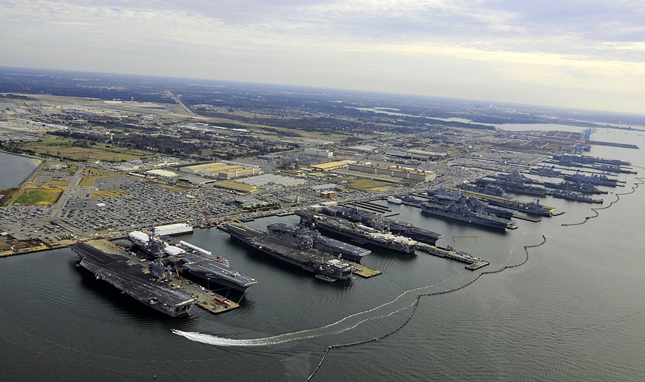-
Former Defense Officials, Officers Discuss Climate Change and National Security on Capitol Hill
June 20, 2017 By Antony Martel
“There’s a lot you can do to mitigate risk once you acknowledge the risk exists,” said John Conger, senior advisor at the Center for Strategic and International Studies at a June 5th briefing on Capitol Hill. Convened by the Environmental and Energy Study Institute, Center for Climate and Security, and the Henry M. Jackson Foundation, the panel of former Department of Defense (DOD) officials and retired military officers included Sherri Goodman, senior fellow at the Wilson Center, and three members of the Military Advisory Board: Brigadier General Gerald Galloway, General Ron Keys, and Rear Admiral Ann C. Phillips.
DOD is continuing to take climate change seriously, the panel agreed. “DOD will adapt to changes in the climate and position itself to best ensure it can carry out its mission and defend the country,” said Conger.
Goodman noted that national security starts from the question, “What are your threats?” Nuclear war “was the highest consequence, but [also] a very low probability threat.” Climate change, in contrast, has “risks of higher probability and consequence in these times than the nuclear threat during the Cold War era.”
“Just take the Arctic. We have a whole new ocean that’s been created and opened up within the last decade,” Goodman said. “Now we have to have more capability to operate in the Arctic in ways that we did not need to do [a] quarter century ago.”
Natural disasters are “creating new risks, particularly in the Asia-Pacific region, which one might call sort of the ‘disaster alley’ of that region,” she said. The military will have to “position our forces to be able to respond to increased typhoons, increased extreme weather events.”
Preparation for climate change’s effects is critical; the military must “be able to train, deploy, operate, [and] reach back,” said General Keys. “We have to be able to do all those things in the face of what could happen.”
“Weather and terrain are the most significant aspects of battlefield combat,” said General Galloway. “You can’t operate with the last war’s equipment when the world around you is changing.”
At Naval Station Norfolk in Hampton Roads, Virginia, one of the largest naval stations in the world, the problem of sea level rise “is particularly acute,” said Rear Admiral Phillips. “We are experiencing sea level rise at twice the rate of other East Coast locations, second only to New Orleans.”
However, a holistic response to climate change is essential. “Resilience and adaptation can’t be limited to just protecting a base or a facility or a city,” said Phillips.
Read More:
- A brief history of the U.S. military’s response to climate change
- What Mattis and the other Secretaries of Defense have said about climate change
- Sherri Goodman on why climate risks must be incorporated into diplomacy, development, and defense
“On the Beat” covers events and webinars on the connections between environment, population, health, development, and security. Send us your suggestions.
Sources: CNA Military Advisory Board, Environmental and Energy Study Institute.
Photo Credit: Aircraft carriers and amphibious ships moored in Norfolk, Virginia, courtesy of Ernest R. Scott/U.S. Navy.
 A Publication of the Stimson Center.
A Publication of the Stimson Center.



